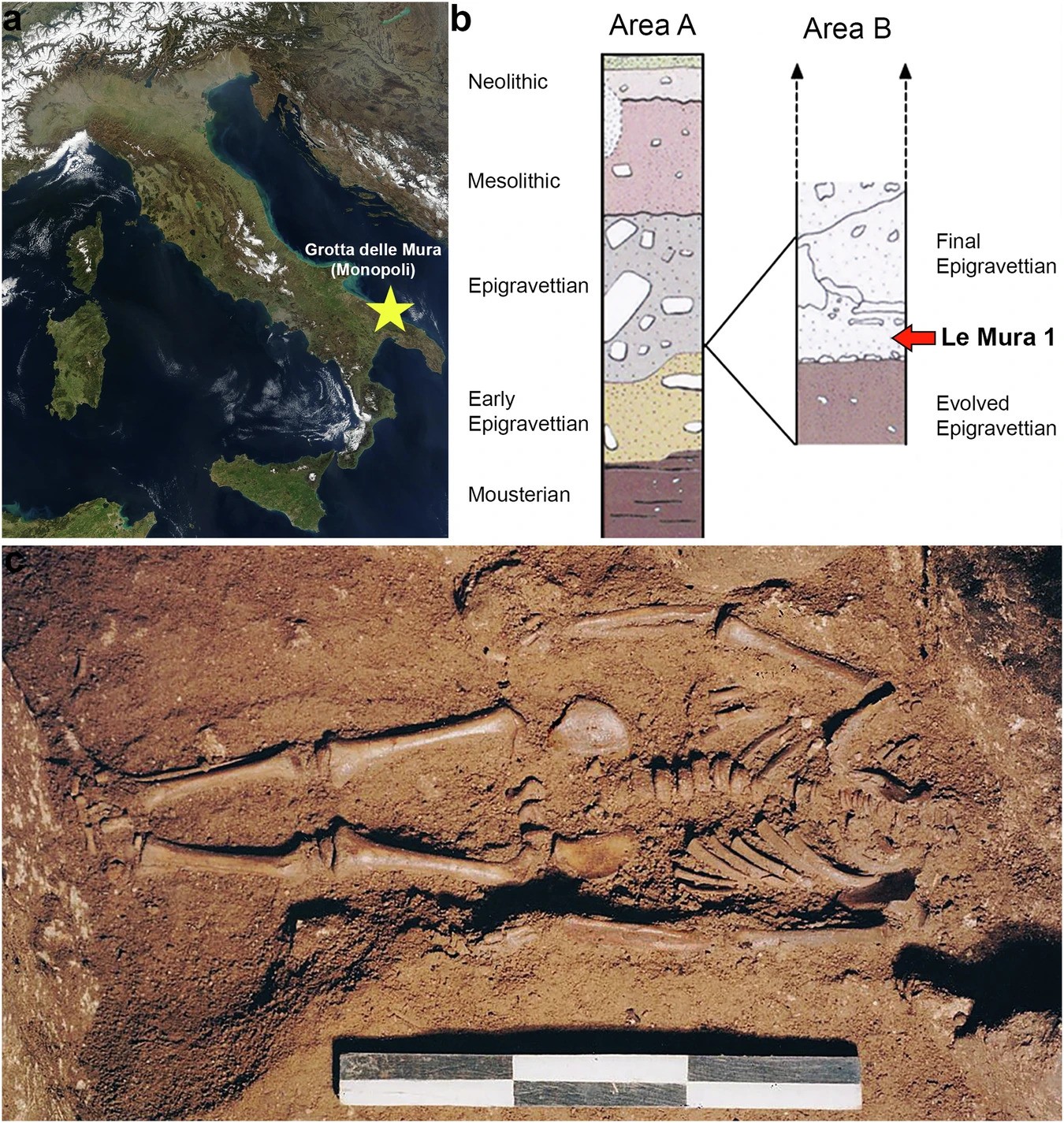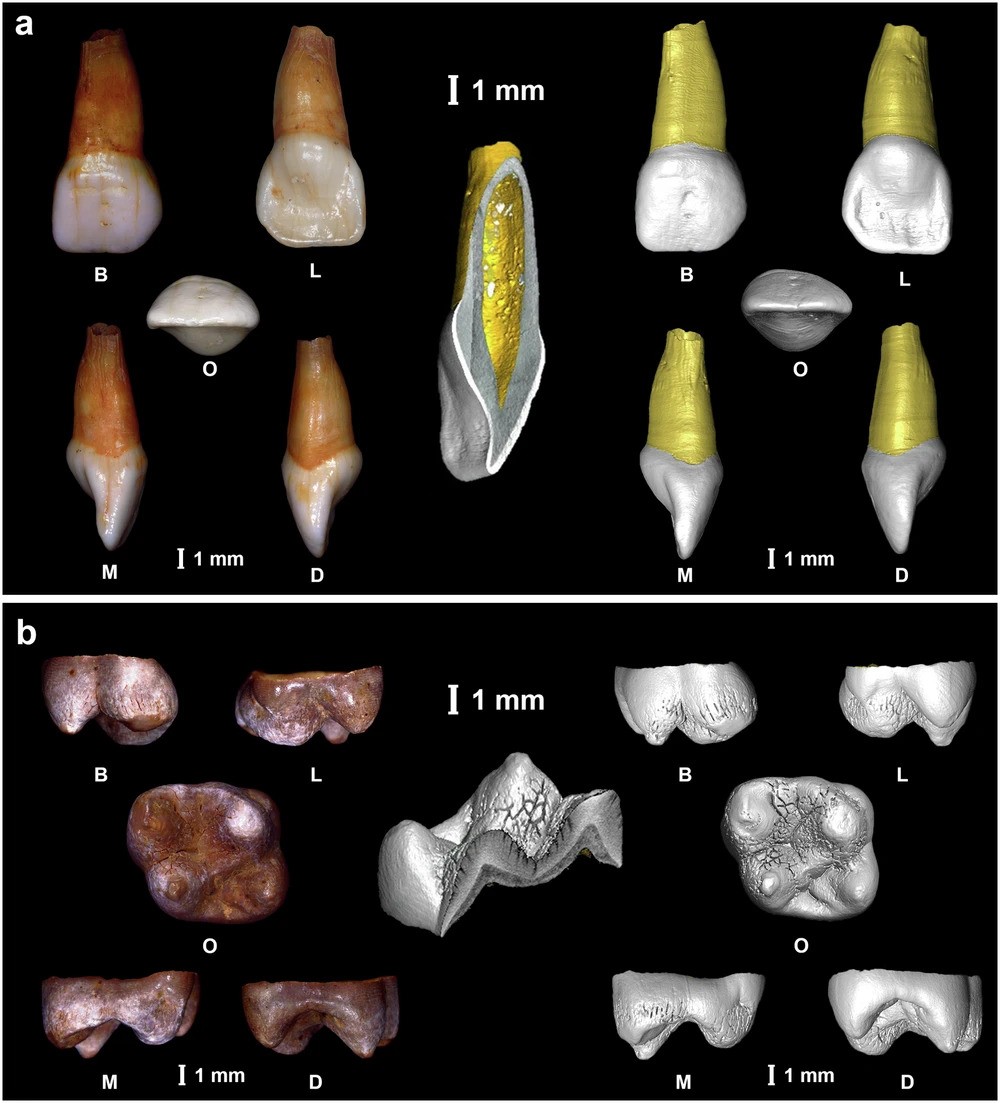Ancient DNA from the skeleton of a baby who lived and died in southern Italy 17,000 years ago has painted a fascinating picture of the ill-fated infant and offers a rare snapshot into ancient life. His remains were found in such good nick that, all these millennia later, researchers have been able to reconstruct details of his life and death with unprecedented precision.
Discovered in a cave in southern Italy in 1998, the “infant of Grotta delle Mura” died at around 7.5 months to 1.5 years of age. He was 82 centimeters (32 inches) tall and likely had blue eyes, curly dark hair, and brown skin – a combination quite common in central and southwestern Europe in the Upper Paleolithic.
His remains, which were found beneath slabs of rock, were remarkably well-preserved, astonishing considering their advanced age – radiocarbon dating places them between 17,320 and 16,910 years old. Because of this, the researchers have been afforded a rare glimpse into the unfortunate infant’s characteristics, development, health, death, and ancestry.

The infant was found in the Grotta delle Mura in 1998.
Genetic analyses revealed that the child probably suffered from hypertrophic cardiomyopathy – a hereditary condition in which the heart muscle becomes thickened – which may have had a hand in his untimely death.
The team also unveiled that the toddler’s parents were closely related – probably first cousins. It’s something that is “rarely found in the Paleolithic, but more common during the Neolithic,” study author Dr Alessandra Modi, from the University of Florence, explained in a translated statement.
A closer look at the little boy’s teeth revealed health struggles before and after birth. At least nine episodes of physiological stress are evident – we don’t know what caused them but “their number draws a picture of severe physical stresses throughout his development and life,” the study authors write.
Isotopes in the teeth suggest the child’s mother had low mobility in the last months of pregnancy and may have been malnourished. In addition, a fracture found in the baby’s collarbone hints that his birth was a difficult one.

Analysis of the infant’s teeth provided information about his and his mother’s lives.
“This pioneering study, which combines different techniques for analyzing skeletal remains, has provided an unprecedented view of the growth and living conditions of a child who lived in a key period for the settlement of the Italian peninsula, also allowing us to gather information about the mother and the hunter-gatherer groups of the time,” said Stefano Benazzi, Professor of Physical Anthropology at the University of Bologna.
In the grand scheme of things, the infant of Grotta delle Mura offers a unique insight into this period of human history, providing another piece of the genetic puzzle in the Italian peninsula 17,000 years ago.
“This study has led to the reconstruction of the oldest genome in Italy,” David Caramelli, Professor of Anthropology at the University of Florence, added. “[It reveals] significant changes in the population of southern Italy at the end of the Last Glacial Maximum, with the arrival of groups from the Balkans, who colonized Italy from the North-East and then descended towards the southernmost regions of the peninsula.”
It’s quite the legacy for one so young.
The study is published in Nature Communications.
Source Link: 17,000-Year-Old DNA Reveals Ice Age Infant Had Blue Eyes And Was A Product Of Incest